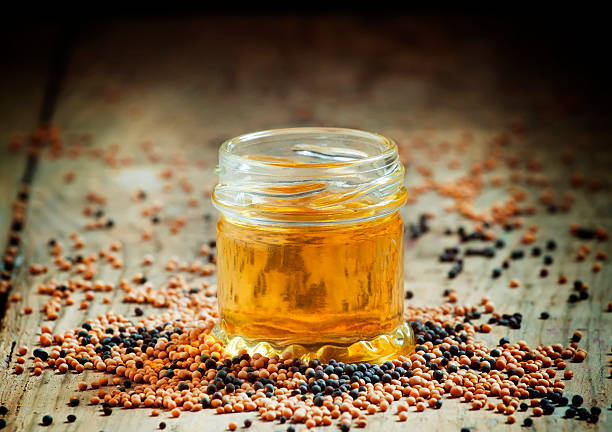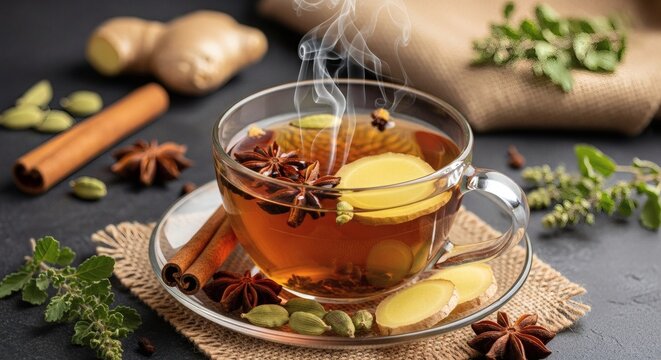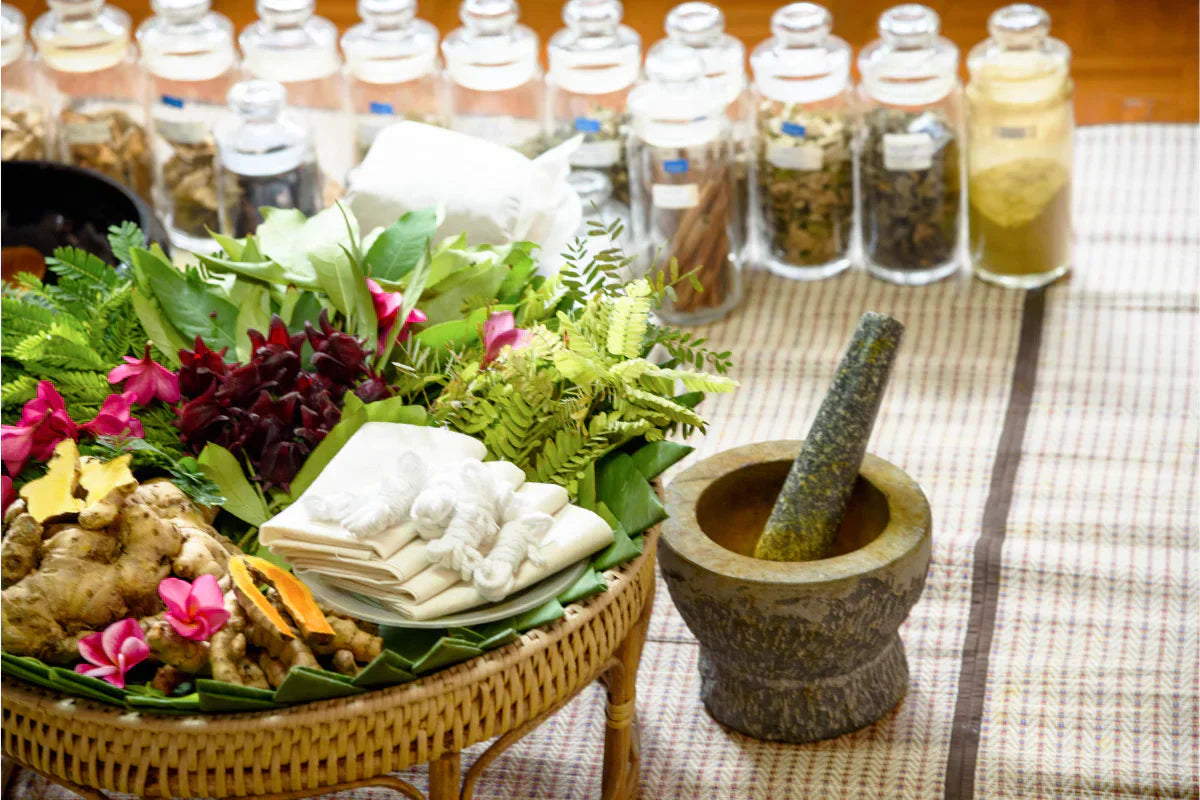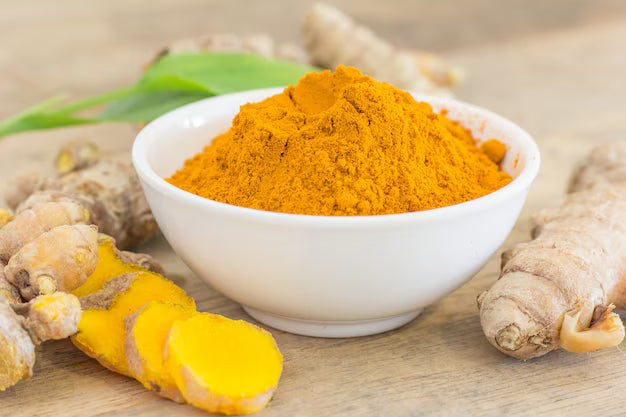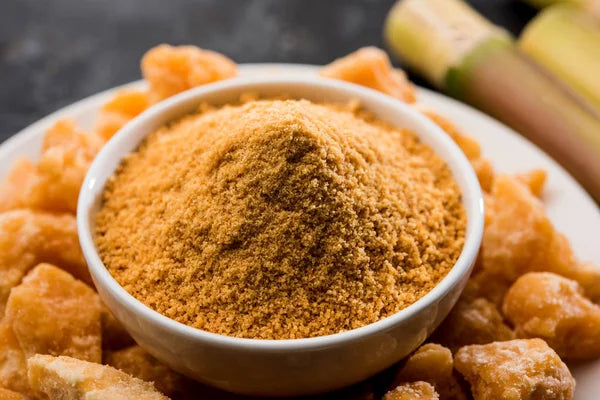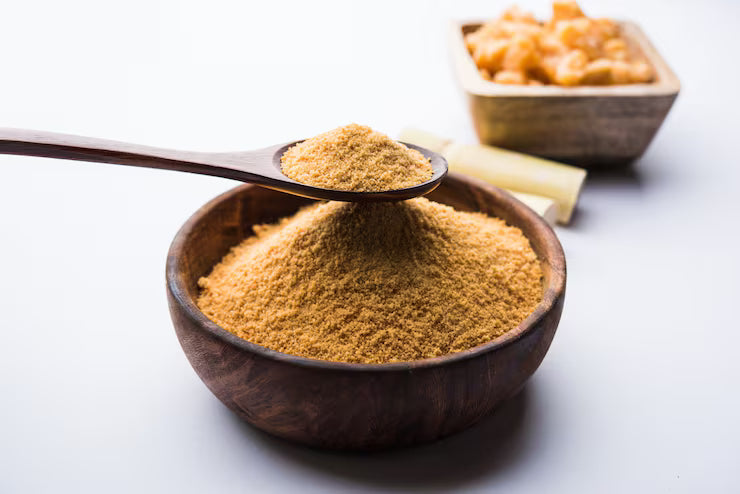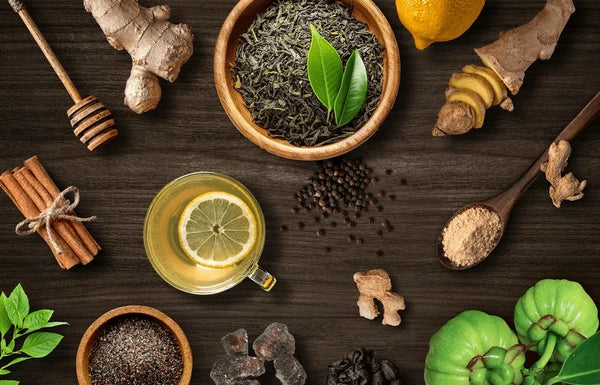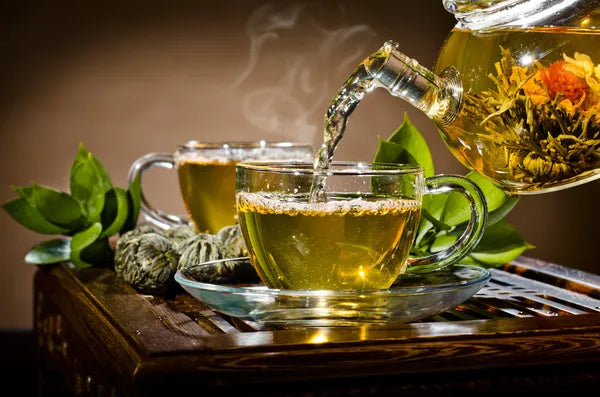Organic Cow Ghee: Benefits, Uses, Nutrition & Ayurvedic Wisdom

What Is Organic Ghee?
Organic ghee is clarified butter made from milk produced under organic farming conditions, meaning the cows are fed chemical-free fodder and raised without hormones, antibiotics, or pesticides. The entire process from milking to churning to slow heating follows organic certification standards, ensuring purity, nutrition, and sattvic (balanced and uplifting) energy.
TL;DR – Organic Cow Ghee: 5 Important Points
- What it is: Clarified butter from organically raised, grass-fed cows—hormone/antibiotic/pesticide-free; sattvic and ideal for Ayurvedic use.
- How it’s made (cultured): Milk → curd → churned butter → slow-heated ghee; cultured ghee (from curd) is easier to digest and more Ayurvedic than cream-based.
- Nutrients: Rich in vitamins A, D, E, K₂, CLA, omega-3s, and butyric acid; lactose-free and supports fat-soluble nutrient absorption.
- Key benefits: Boosts Agni & gut health, nourishes brain (Medhya), supports heart/joints/skin, builds Ojas (immunity), and can aid weight management when used moderately.
- How to use & safety: Cook, morning warm-water cleanse, night milk tonic, skin/scalp care, Nasya/abhyanga; stick to ~2–4 tsp/day and avoid excess in heavy Kapha/Mandagni.
Organic Cow Ghee Meaning
Organic cow ghee is clarified butter prepared from the milk of organically raised cows, i.e., without the use of synthetic hormones, pesticides, antibiotics, or chemical-based cattle feed. The cows are grass-fed on natural, chemical-free fodder, and the entire process from milk collection to ghee making follows organic farming standards. This ensures that the ghee remains pure, sattvic, and toxin-free, making it ideal for Ayurvedic use in diet, daily wellness, and traditional formulations.
It is rich in nutrients, sattvic in nature, and highly valued in Ayurveda for digestion, immunity, and building ojas (vital energy).
Note: All organic cow ghee is organic ghee, but not all organic ghee is cow ghee. Ayurveda describes ghee as samskara anuvartana—“it carries forward the qualities of its source.” When the cow, her feed, and her environment are pure, the ghee becomes purer and more nourishing.
Organic Cow Ghee vs Regular Ghee: What’s the Difference?
How Is Organic Cow Ghee Made?
Maharishi Ayurveda Organic Cow Ghee is made from pure organic cow’s milk, sourced from farms where cows are fed natural, chemical-free fodder and cared for with compassion and respect. The entire process follows organic and Ayurvedic standards, ensuring purity, freshness, and nutritional integrity.
Step-by-Step Process
1. Morning Milking
Milk is collected early in the morning, when cows are calm and naturally rested.
Morning milk is considered the purest and most sattvic, with minimal bacterial activity and higher freshness, making it ideal for preparing high-quality organic ghee.
2. Boiling Milk
The freshly collected milk is gently boiled to eliminate any microbes while retaining its natural nutrients and aroma.
3. Curd Formation
Once cooled, the milk is set into curd using a natural starter culture (jaaman). This enhances digestibility and aligns with Ayurvedic fermentation practices.
4. Churning
The curd is churned using traditional methods to separate makkhan (butter) from buttermilk. This step enhances the ghee’s texture and preserves beneficial enzymes.
5. Heating Butter
The butter is then slowly heated over a low flame until it releases clear, golden aromatic ghee. This gentle heating preserves vital nutrients and flavor.
6. Filtering & Storing
The ghee is carefully filtered and stored in glass containers to maintain purity, aroma, and longevity.
This slow, mindful process retains the prana (life energy), sattva (purity), and nutritional essence described in Ayurveda, making every spoon of Maharishi Ayurveda Organic Cow Ghee a symbol of nourishment, balance, and wellbeing.
Cultured vs. Non-Cultured Ghee
-
Cultured Ghee: Made from curd (dahi) churned butter using traditional methods. It is easier to digest, increases Agni (digestive fire), and balances all three doshas.
-
Non-Cultured Ghee: Made directly from cream or malai. Common in industrial production, but lacks probiotic and cultured benefits.
Ayurveda recommends cultured ghee for its rasayana (rejuvenating) and medhya (brain-nourishing) qualities.
Nutritional Value of Organic Cow Ghee
|
Nutrient |
Amount (per tbsp ≈14 g) |
|
Calories |
120 kcal |
|
Fat |
14 g (mainly healthy saturated & MUFA fats) |
|
Protein |
0 g |
|
Carbohydrates |
0 g |
|
Lactose |
0 g (safe for intolerance) |
|
Vitamins |
A, D, E, K₂ |
|
Fatty Acids |
Omega-3, CLA, Butyric acid |
Micronutrient Composition
Ghee is rich in fat-soluble vitamins that are essential for metabolism, immunity, and tissue repair:
-
Vitamin A – Supports good vision, healthy skin, immunity, and cell growth.
-
Vitamin D – Helps in calcium absorption, bone strength, and immunity.
-
Vitamin E – Acts as an antioxidant, protects cells, supports skin glow, improves reproductive health, and slows ageing.
-
Vitamin K (especially K2) – Essential for bone and heart health, helps direct calcium into bones and prevents deposits in arteries.
Organic Cow ghee, especially from grass-fed organic cows, contains higher levels of Vitamin K compared to conventional ghee.
Health Benefits of Organic Cow Ghee
1. Benefits of Organic Ghee for Digestion
Ayurveda: Ghee is “Agni deepana” – it stimulates digestive fire without aggravating Pitta. It nourishes the intestinal lining and helps in ama-pachana (toxin removal).
Science: Ghee contains butyric acid, a short-chain fatty acid that feeds gut bacteria, heals intestinal walls, and reduces inflammation (helpful in IBS, ulcerative colitis, etc.).
Small daily intake improves digestion, prevents constipation, and enhances nutrient absorption.
2. Benefits for the Brain & Nervous System
Ayurveda: Called “Medhya Rasayana”, ghee nourishes the brain, supports memory, concentration, and emotional stability.
Science: Rich in omega-3 fatty acids and good cholesterol, essential for building brain cells, myelin sheath, and neurotransmitter function.Improves focus, reduces anxiety, and supports long-term brain health.
3. Benefits for Heart & Circulation
Ayurveda: In moderation, ghee balances Vata & Pitta, improves circulation, and strengthens ojas (vital energy).
Science: Organic grass-fed ghee is rich in CLA (Conjugated Linoleic Acid) and Omega-3s, which:
-
Improve HDL (“good cholesterol”)
-
Support heart function
-
Reduce arterial stiffness. When consumed mindfully, ghee is heart-friendly compared to refined oils.
4. Benefits for Joints & Bones
Ayurveda: Ghee is a natural sneha (lubricant) that strengthens asthi dhatu (bone tissue) and reduces joint stiffness.
Science: Rich in Vitamin K2 (from grass-fed cows), which helps calcium absorption in bones and prevents calcification in arteries. Supports arthritis relief, flexibility, and stronger bones.
5. Benefits for Skin
Ayurveda: Ghee is Snigdha (unctuous), Ropana (healing) – it enhances glow, moisture, and wound healing. Used both internally and externally (for abhyanga or nasya).
Science: Vitamins A & E in ghee are antioxidants that promote skin repair, elasticity, and hair strength.
Daily use improves complexion, slows aging, and prevents dryness.
6. Benefits for Immunity (Ojas)
Ayurveda: Ghee is one of the best foods to nourish Ojas – the essence of all dhatus (tissues), which governs immunity, vitality, and emotional stability.
Science: Antioxidants (Vitamin E, CLA) + butyric acid, anti-inflammatory, strengthens gut-immune axis.
Regular intake builds long-term disease resistance and recovery capacity.
7. Ghee & Weight Management
Ayurveda: Ghee enhances Agni (metabolism) and prevents accumulation of ama (toxins) that cause stubborn fat.
Science:
-
CLA in ghee promotes fat metabolism.
-
Provides satiety, reduces overeating.
-
Medium-chain fats give steady energy, reducing sugar cravings. Helps in weight loss when used moderately (1–2 tsp/day) with warm water or herbal teas.
8. Organic Ghee for Kids & the Elderly
For Kids
-
Enhances memory, concentration, and healthy weight gain.
-
Acts as a natural brain tonic for growing children.
For the Elderly
-
Improves joint lubrication, mobility, and digestion.
-
Prevents dryness of tissues (common in old age due to Vata dominance).
-
Supports memory, eyesight, and energy.
Both Ayurveda & science consider ghee as a safe, nutrient-dense fat for all age groups.
Ayurvedic Significance of Organic Cow Ghee
-
Tridosha balancing – in proper quantity, cow ghee pacifies Vata & Pitta, and in moderation does not aggravate Kapha.
-
Agni deepana – improves digestive fire without overheating the system.
-
Medhya (nervine tonic) – enhances memory, concentration, and intelligence.
-
Rasayana acts as a rejuvenator, slowing the aging process and improving vitality.
-
Vrishya (aphrodisiac) – nourishes reproductive tissues and promotes fertility.
-
Netrya – good for the eyes, as it supports vision and reduces dryness.
Charaka Samhita states: “Among all fats, cow ghee is the best as it balances doshas, improves intelligence, memory, and digestion.”
Organic Cow Ghee in Panchakarma & Rasayana Therapies
1. Panchakarma (Detox & Purification)
Snehapana – therapeutic internal oleation, where increasing doses of ghee are given to prepare the body for Vamana (emesis) or Virechana (purgation).
Ghee pulls out fat-soluble toxins (ama) from deep tissues.
2 . Rasayana (Rejuvenation)
Cow ghee serves as the base for many Ayurvedic Rasayanas, including Brahmi Ghrita, Ashwagandhadi Ghrita, and Shatavari Ghrita.
Acts as a carrier (yogavahi) – delivering the properties of herbs deep into tissues, especially the brain and nerves.
How to Use Organic Ghee in Daily Life
1. Cooking with Organic Ghee
Ayurveda regards ghee as the best cooking fat, light, stable, and sattvic. Its high smoke point (≈ 250 °C) makes it perfect for sautéing, frying, or baking without creating harmful free radicals.
Use it for khichdi, dals, parathas, or even baking, and notice enhanced flavor, easier digestion, and better nutrient absorption.
Modern science agrees that ghee increases the bioavailability of fat-soluble vitamins (A, D, E, K) and acts as a yogavahi, helping spices and herbs deliver deeper nourishment.
2. Organic Ghee for Skin
Ghee is Snigdha (moisturizing) and Ropana (healing), a natural beauty elixir.
Apply warm ghee on your face or body at night to soften skin, reduce dryness, and fade fine lines. Use it as a lip balm for chapped lips or a scalp massage oil to strengthen roots and reduce dandruff.
Vitamins A and E in ghee repair tissue damage and promote a youthful glow. It’s gentle enough even for infant massage, a trusted Ayurvedic tradition for stronger bones and soft, nourished skin.
3. Organic Ghee in Coffee or Morning Beverages
Add one teaspoon of ghee to your morning coffee or herbal drink to make it “bulletproof.” It balances coffee’s acidity, prevents jitters, and provides sustained energy without sugar spikes. Ghee’s healthy fats fuel the brain, enhancing focus and alertness while supporting fat metabolism, making it ideal for Keto or intermittent fasting routines. From an Ayurvedic lens, it transforms an overstimulating beverage into a grounding, Vata-pacifying ritual that keeps you energized yet calm through the day.
4. Morning Detox with Ghee
A simple Ayurvedic cleanse: take 1 teaspoon of organic ghee with warm water on an empty stomach each morning. This practice stimulates Agni (digestive fire), flushes toxins (Ama), lubricates internal tissues, and jump-starts metabolism. It’s especially beneficial after heavy meals or travel, as it gently detoxifies the liver and intestines. Regular use supports lightness, better digestion, and natural vitality, an easy, effective habit to begin your day the Ayurvedic way.
5. Evening Ritual for Sleep & Digestion
Before bedtime, stir half a teaspoon of ghee into warm milk with a pinch of turmeric or cardamom. This calms the nervous system, nourishes tissues, and promotes deep sleep. Ayurveda calls this Ojas-building night tonic. It relieves dryness, eases constipation, and restores energy overnight. A consistent evening ritual with ghee supports emotional balance, smooth digestion, and restful rejuvenation.
6. Ayurvedic Therapeutic Applications
-
Nasya (Nasal Drops): 2–3 drops of warm ghee per nostril daily lubricate nasal passages, reduce sinus dryness, strengthen eyesight, and relieve migraines.
-
Abhyanga (Massage): Full-body massage with warm ghee calms Vata, strengthens muscles, and improves skin tone.
-
Netra Tarpana (Eye Rejuvenation): Medicated ghee therapy for relieving dryness and fatigue from digital strain.
-
Burns & Wounds: Acts as a Ropana (healer), soothing inflammation and accelerating recovery.
These ancient applications prove that ghee is not merely food; it’s Ayurveda’s living medicine, nurturing both body and mind.
Side Effects & Precautions
-
Consume in moderation 2–4 tsp/day is ideal.
-
Avoid overuse in obesity, low digestion (Mandagni), or heavy Kapha conditions.
-
Safe for most lactose-intolerant individuals (nearly lactose-free).
-
Excess intake may cause heaviness or sluggish digestion.
Conclusion: Why Organic Cow Ghee Is a Holistic Superfood
Organic cow ghee harmonizes Ayurvedic wisdom and modern nutrition.
It is sattvic, nourishing, hormone-free, and deeply rejuvenating, a true Rasayana for modern living.
Key Takeaways
-
Strengthens digestion, brain, and immunity.
-
Enhances vitality and longevity.
-
Safe for daily use across all ages.
-
Ethical, sustainable, and spiritually aligned with Ayurveda’s dharmic values.
Organic Cow Ghee is not just a cooking ingredient; it’s Ayurveda’s golden elixir, a timeless superfood that nurtures body, mind, and spirit. Incorporating it daily brings balance, radiance, and resilience to modern life.
Choose purity. Choose tradition. Choose wellness with Maharishi Ayurveda Organic Cow Ghee.
FAQs
1. Is cow ghee always organic?
No. Cow ghee is organic only if the cow is fed chemical-free fodder, raised without hormones or antibiotics, and the ghee is prepared using certified organic practices.
2. Can I use organic ghee for weight loss?
Yes. In moderation, organic ghee boosts metabolism, improves digestion, and provides satiety through CLA and healthy fats, helping reduce sugar cravings and support sustainable weight management.
3. Is organic ghee better than regular ghee?
Yes. Organic ghee is purer, chemical-free, richer in nutrients, and aligns with Ayurvedic principles, offering better digestion, immunity, and ojas-building benefits than regular commercially processed ghee.
4. Can we eat organic ghee daily?
Yes. Consuming 2–4 teaspoons daily supports digestion, immunity, skin, and vitality. It’s safe, nutrient-rich, and easily digestible when used in moderation with a balanced lifestyle.
Popular Posts

Why Winter Makes Your Knees Ache: Vata-Balancing Tips & How to Use Pirant Oil
22 Dec, 2025Winter often brings an unwelcome rise in knee pain. Modern science and Ayurveda explain why joint...
Read more
Why Oral Care is a Daily Detox Ritual in Ayurveda
22 Dec, 2025Introduction — The Mouth as the Gateway to Health In Ayurveda, digestion is the foundation of ...
Read more
How to Improve Gut Health with Ayurveda
19 Dec, 2025Introduction Ayurveda has always emphasised that the root of health and disease lies in the gu...
Read more





 Popular Read
Popular Read


































